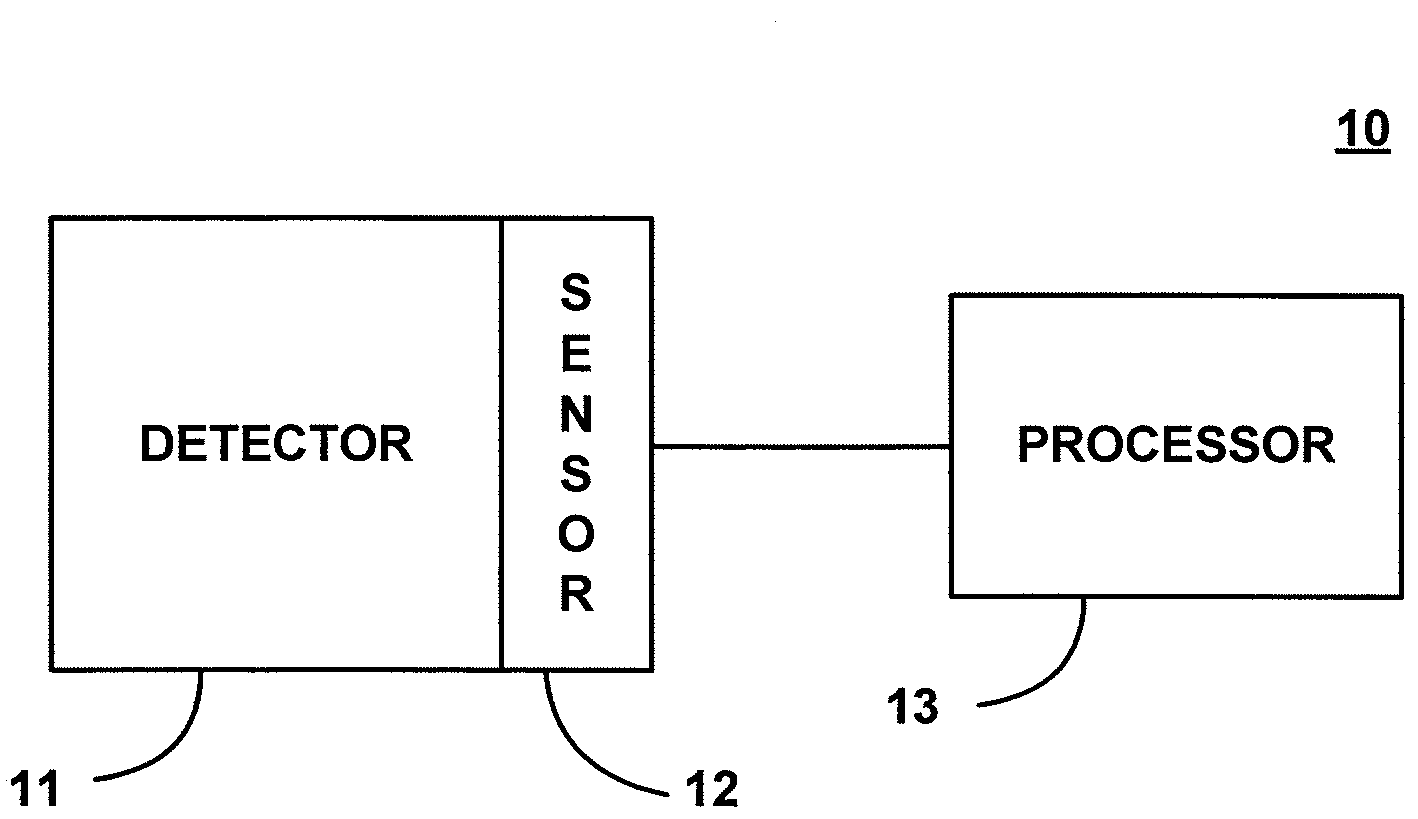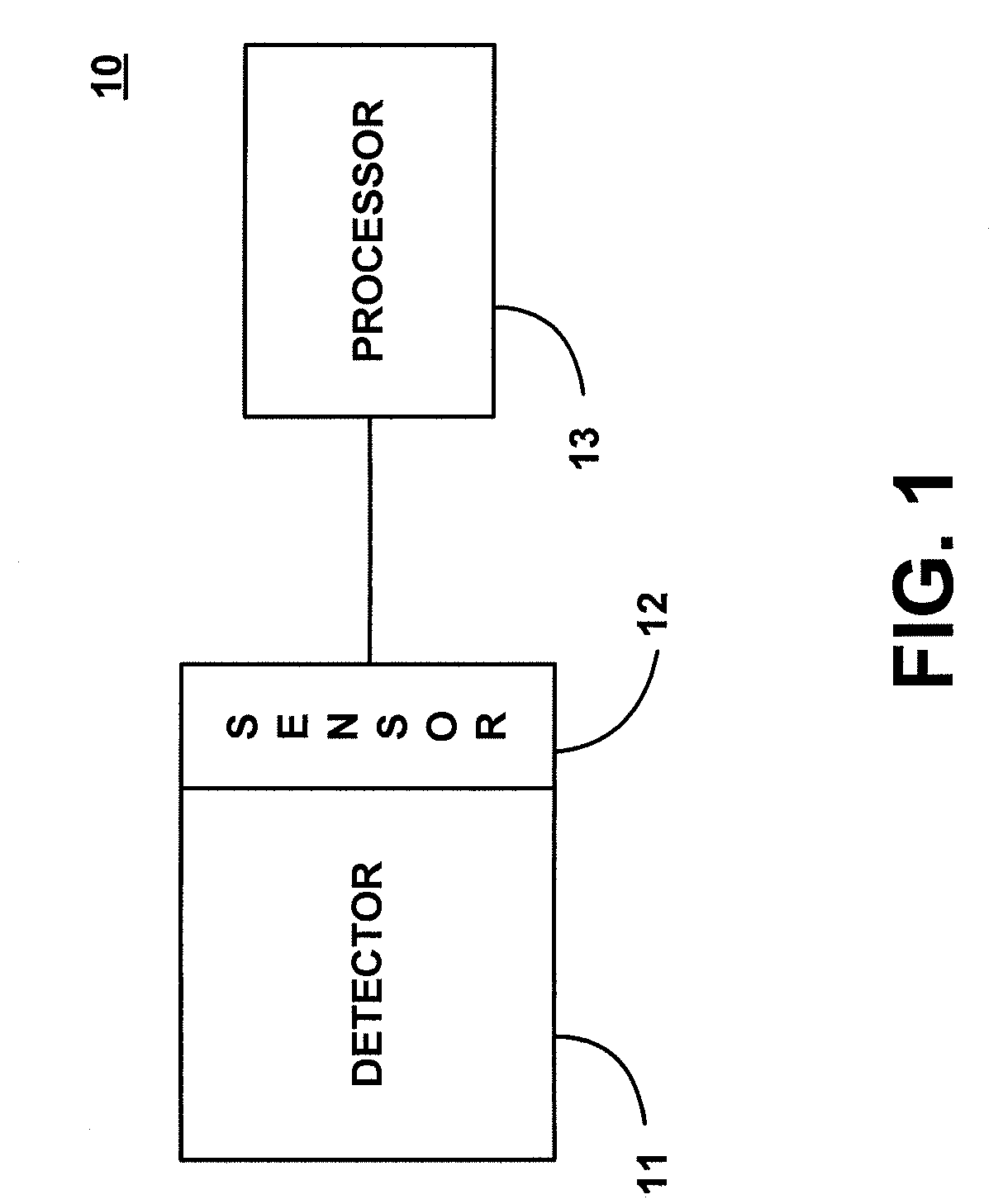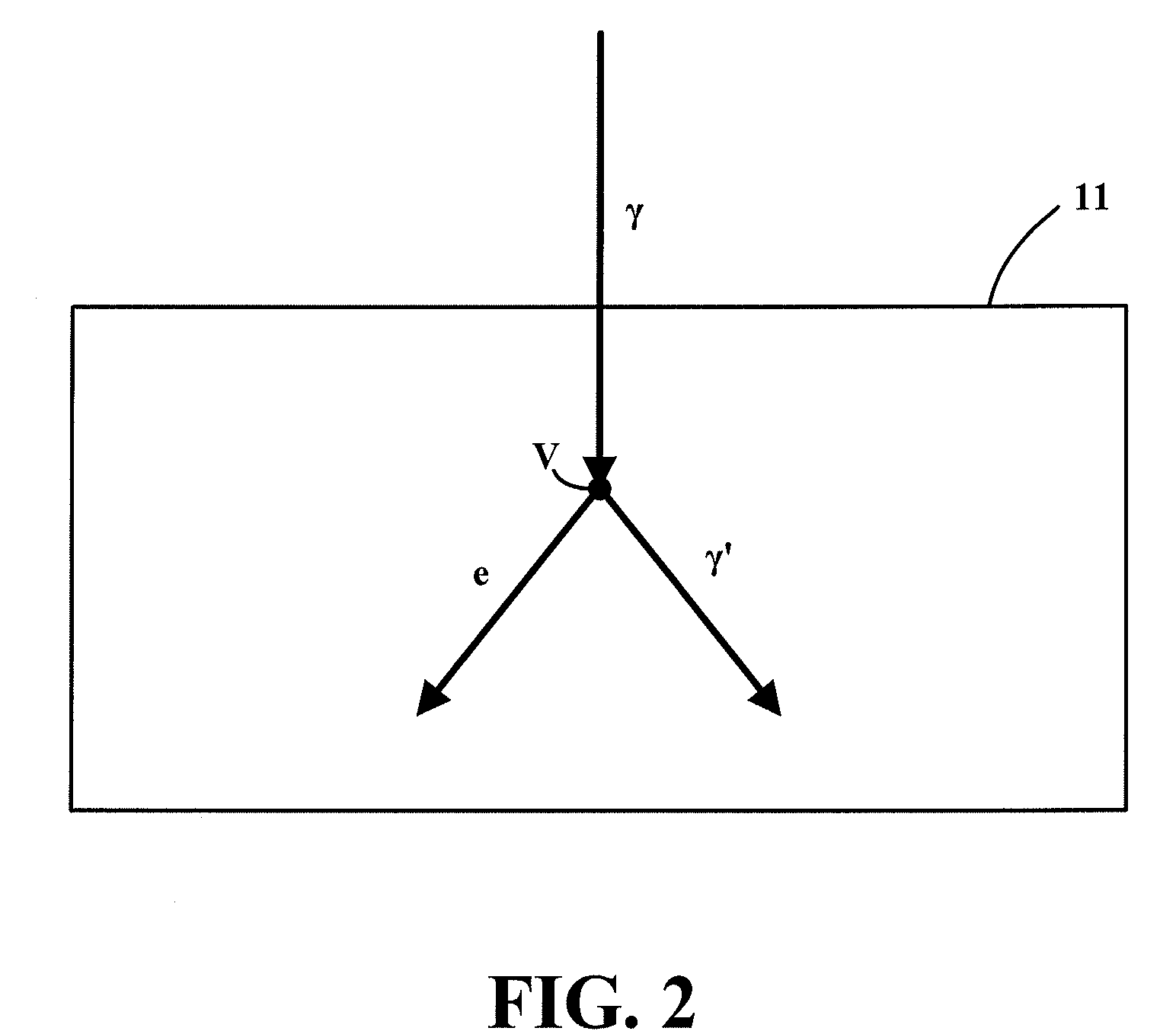Gamma vector camera
a gamma vector camera and camera body technology, applied in the field of radiation detection, can solve the problems of limited ability of conventional radiation detection technology, low sensitivity of conventional systems based on pinhole camera designs, and limited sensitivity of conventional systems. achieve the effect of small siz
- Summary
- Abstract
- Description
- Claims
- Application Information
AI Technical Summary
Benefits of technology
Problems solved by technology
Method used
Image
Examples
Embodiment Construction
[0025]The detailed description of the invention set forth below in connection with the associated drawings is intended as a description of various embodiments of the invention and is not intended to represent the only embodiments in which the invention may be practiced. The detailed description includes specific details for the purpose of providing a thorough understanding of the invention. However, it will be apparent to those skilled in the art that the invention may be practiced without all of the specific details contained herein. In some instances, well known structures and components are shown in block diagram form in order to avoid obscuring the concepts of the invention.
[0026]FIG. 1 is a block diagram depicting basic components of a gamma vector camera according to one embodiment of the invention. As shown in FIG. 1, gamma vector camera 10 includes a detector 11, a sensor 12 and a processor 13. Detector 11 and sensor 12 are part of a detection system configured to detect and...
PUM
 Login to View More
Login to View More Abstract
Description
Claims
Application Information
 Login to View More
Login to View More - R&D
- Intellectual Property
- Life Sciences
- Materials
- Tech Scout
- Unparalleled Data Quality
- Higher Quality Content
- 60% Fewer Hallucinations
Browse by: Latest US Patents, China's latest patents, Technical Efficacy Thesaurus, Application Domain, Technology Topic, Popular Technical Reports.
© 2025 PatSnap. All rights reserved.Legal|Privacy policy|Modern Slavery Act Transparency Statement|Sitemap|About US| Contact US: help@patsnap.com



